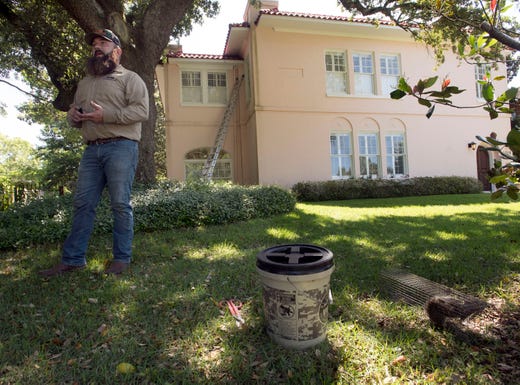Discovering that an animal has taken up residence beneath your home can be both intriguing and concerning. While it’s natural to want to know what’s sharing your space, identifying the animal living under your house can be a bit of a challenge.
Signs of an Uninvited Guest
Do you know the signs that point to having a visitor beneath your house? Here are some common indicators:
- Strange Noises: Unusual sounds like scratching, scurrying, or thumping coming from below your home can be a clear sign of animal activity.
- Droppings or Tracks: Examining droppings or tracks near entry points or in the surrounding area can provide clues about the type of animal present.
- Unpleasant Odors: Foul or musky smells may indicate the presence of animals, especially if they’ve created nests or burrows.
- Visible Entry Points: Look for openings or damage around the foundation, vents, or crawl space entrances that could serve as access points for animals.
- Changes in Behavior: Pets may exhibit unusual behavior, such as heightened alertness or excessive digging, which could signal the presence of an intruder.
Common Culprits: Who’s Under Your House?
Some of the typical animals that may choose the space beneath your home as their dwelling include:
- Rodents (Rats and Mice): Rodents are notorious for seeking shelter in crawl spaces or basements. They leave behind distinctive droppings and may create nests using insulation or other materials.
- Skunks: Skunks are known to burrow beneath structures, creating dens for shelter. The presence of skunks may be indicated by their distinct odor, particularly if they feel threatened.
- Raccoons: Raccoons are adept climbers and may access the space under your house through trees or other structures. They can cause damage and may leave tracks or droppings.
- Opossums: Opossums are skilled at finding shelter in crawl spaces or under porches. They are generally nocturnal and may not be visible during the day.
- Squirrels: Squirrels are excellent climbers and may enter your home through the roof or other openings. They may leave behind nests made of twigs, leaves, and other materials.
- Stray Cats: Cats seeking refuge may find the space under your house appealing. Look for signs of cat activity, such as paw prints, fur, or makeshift nests.
Methods to Identify the Intruder
Here are a few ways you can identify the animal living under your house:
- Inspection: Conduct a thorough inspection of the exterior and interior of your home. Look for entry points, tracks, nests, and droppings. Pay attention to any unusual smells or sounds.
- Trail Cameras: Consider setting up trail cameras around the perimeter of your home. These cameras can capture images or videos of the animals and help identify them.
- Professional Inspection: If you’re unable to identify the animal on your own, consider hiring a wildlife professional. They have the experience and knowledge to assess the situation and identify the intruder.
Dealing with the Unwanted Visitor
Once you’ve identified the animal living under your house, you can explore appropriate measures to address the situation:
- Seal Entry Points: Identify and seal any openings or gaps in your home’s foundation, walls, or vents. This helps prevent further access by the animal.
- Use Deterrents: Depending on the type of animal, you may explore the use of deterrents such as motion-activated lights, sprinklers, or specific scents that repel the intruder.
- Consult Professionals: If the situation is complex or involves potentially dangerous wildlife, consult with professionals. Wildlife removal experts can safely and humanely handle the situation, ensuring the well-being of both you and the animal.
- Implement Habitat Modifications: Make your property less attractive to wildlife by removing potential food sources, securing trash cans, and eliminating hiding spots.
Preventing Future Intrusions
Once you’ve successfully dealt with the current visitor, take proactive measures to prevent future incidents:
- Regular Maintenance: Conduct regular inspections of your home’s exterior and address any potential entry points promptly.
- Landscaping: Trim trees and bushes away from your home, reducing the likelihood of animals using them as access points.
- Secure Trash: Ensure that trash cans are tightly sealed to minimize the attraction of wildlife looking for food.
- Professional Consultation: If you’re in an area prone to wildlife intrusion, consider consulting with wildlife professionals for long-term prevention strategies.
Identifying the animal living under your house is the first step toward resolving the situation. If you need any support, contact us for more.


